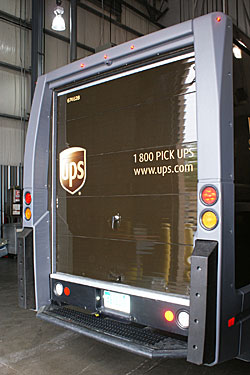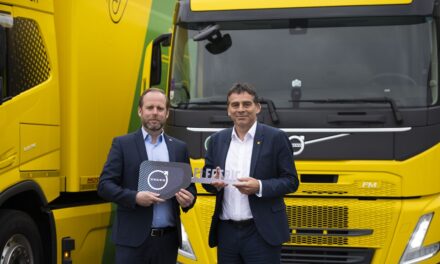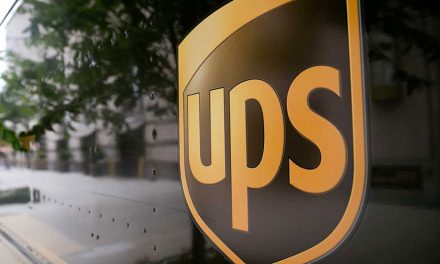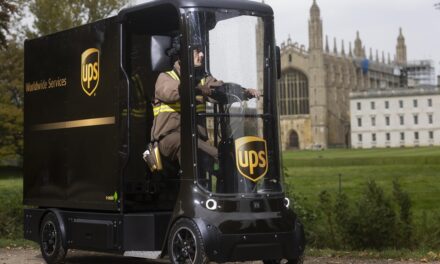
Lightening the Load in the Delivery Fleet
An increasing use of plastics within vehicles looks like the future for delivery fleets, with an important trial from UPS showing real benefits on fuel consumption, writes James Cartledge UPS has just finished a year of testing on a delivery vehicle in the United States that uses plastic body panels instead of standard metalwork – and achieves a 40% better fuel consumption.
That’s an astounding improvement, and speaking to Dale Spencer, the UPS director of automotive engineering, it’s clear this is by no means the only benefit from the new technology developed with partners Utilimaster and Isuzu.
UPS has now ordered 150 of these composite-body REACH vehicles, to join the company’s global fleet of 94,946 delivery vehicles on high mileage routes by the end of 2012.
However, it appears that e-commerce may have thrown a wrench in the works as far as UPS expanding its use of this lightweight delivery truck even further.
Developing the technology
It’s now nearly four years after the first designs appeared for a vehicle to be developed through a partnership between UPS, one of its major vehicle body suppliers Utilimaster and chassis manufacturer Isuzu.
Dale Spencer, the UPS director of automotive engineering says UPS was hunting around for any improvement it could get in the fuel consumption of its vehicles as fuel prices shot through the roof in the tail end of the last decade.
He says this is often the case when fuel prices escalate, but this time UPS took a decision that even if fuel prices dropped down again, it would continue looking for ways to make its vehicles more efficient because of the cost and environmental benefits attached.
John Knudtson, vice president of product development at Utilimaster, says his company looked around at what materials and technologies were available to make a standard Reach delivery vehicle much lighter weight.
The result was the CV-23 version of the standard REACH delivery vehicle, or as UPS terms it, the P63 package car. Knudtson explains that it’s not a single technology per se, the vehicle uses a range of different technologies to make it 900lbs lighter than the conventional UPS package car, the P70.
Although the P63 has a slightly smaller carrying capacity than the P70 – 630 cubic feet compared to 700 cubic feet – because it is so much lighter, it can uses much smaller, less thirsty engine. The four-cylinder Isuzu diesel engine with a six-speed Aisin automatic transmission provides 150 horsepower to the vehicle.
Trials
From April last year, UPS had five prototype vehicles to test, and developed trials for the CV-23 in very different climatic and topographical areas of the United States.
Averaging more than 160 miles per day, the prototypes were driven in the desert conditions of Arizona, the backroads of Nebraska and the harsh winters of New York State, along with an area close to Utilimaster and Isuzu in Michigan, and an area close to UPS in Georgia.
“These were diverse environments – we put the vehicles along washboard roads, they were some of our toughest areas, because not only did we want to look at the fuel efficiency, we also wanted to make sure the integrity of the body was going to hold up,” says Spencer.
The testing ran for a year until this April, generating plenty of data and a performance that was everything for which UPS had been hoping.
“I can’t remember back in my 30-year career history where a project came together and was as successful as it was,” he says. “The durability of the body, the durability of the chassis, the engine – it was impeccable.”
With a “seamless” integration into the delivery fleet, Spencer says UPS drivers loved the way the P63 drove, garnering plenty of positive feedback from those who got their hands on the new vehicle.
Benefits
At the end of the trial, UPS found that the new P63 vehicles offered a “remarkable” 40% improvement in fuel consumption compared to the conventional diesel-powered P70.
For UPS, it has shown the importance of considering more fundamental ways to cut the fuel consumption of its vehicles.
Spencer says: “I know that electric vehicles and hybrids and that kind of technology is getting a lot of press right now, and it is green. But sometimes the simplest things that you can do with your current technology has the largest impact.”
The composite body system also brings other benefits for the vehicles. Along with the lighter weight, the plastic can be shaped more easily to improve aerodynamics than metal equivalents, improving the fuel efficiency even further. The plastic is also a much better thermal insulator than metal, making for vehicles that are more efficient to heat or cool, and also a better sound insulator.

The composite-body CV-23 offers major benefits for fleet owners, but for UPS may not be quite suitable for the boom in ecommerce packages
The technology also promises to make maintenance easier.
Knudtson says the impact-resistant plastic material means that the body panels can withstand minor impacts with little or no damage. Since the plastic is made in the required color – brown for UPS, naturally – any scratches or scuffs do not need repainting. If there is damage, the panels are easily replaceable.
“For a fleet operator like UPS, rather than have to take it to a body shop and complete the body repair, sand and repaint it, on these vehicles if they are damaged to a point where you need to replace the panel, it can be very quickly removed and replaced,” he says.
Tying in with the need to run vehicles in some seriously harsh climates, the plastic composite material also suffers no corrosion problems as metal bodywork does.
“It’s no secret in the commercial industry that some of the salts they’re putting on roads these days – more calciums and potassiums rather than sodium-based salts – may not eat up the roads as badly, but eat up the metal bodies a lot worse,” says Knudtson. “Being able to put plastics on the vehicles in high corrosive areas in more of the harsh environments is a big advantage.”
Costs
Clearly, a 40% improvement in fuel consumption is going to have a significant impact on running costs, but how does the plastic-composite system affect upfront costs for these vehicles? It’s a key barrier for many other alternative vehicle technologies like electric drivetrains.
While specifics remain commercially sensitive, Spencer says the vehicle was “a little more” than what UPS usually spends on delivery vehicle, but “not a whole lot more”.
“It’s single digit percentages, but it does have a lot of Return on Investment built into it. When you run 40% better fuel economy, you obviously can quickly pay for that upcharge,” he says.
Knudtson says the composites do tend to be more expensive than steel, and depending on current prices is more comparable with aluminium. But he says they are “not significantly” more, and that as production volume increases, the prices are coming down.
“There are manufacturing advantages – for example it reduces the amount of labour needed to put the vehicles together,” he says. “Instead of mechanical fasteners or a lot of welding, with a composite body you can mould them so they virtually snap together.”
Future
Utilimaster is now fully expecting to ramp up production on the composite-body vehicles to “a pretty significant number” as it now makes it available to other commercial users.
For UPS, however, an order for 150 vehicles may be the limit for its use of the P63 on American roads.
Spencer reveals that it is the changing nature of the package market – and particularly the increasing importance of e-commerce and its lightweight packages – that is the issue.
“The characteristics of our packages and their deliveries has changed to the point that unfortunately, this size vehicle needs to be a little bigger now,” says the UPS director of automotive engineering. “Our new large orders will be for 800 and 1,000 cubic foot cars.”
Looking back, Spencer says UPS could have spent more time working towards a larger delivery vehicle. But in the four years that the project has developed, the US package market has changed dramatically.
Last week, UPS executives revealed that in the latest quarter, the company has seen a 25% increase in lightweight packages in its US ground volumes compared to the second quarter of 2011.
But Spencer says the composites project was never about developing a particular lightweight delivery vehicle.
“This whole test was about what we can do with composites and what can we do to incorporate them into our larger vehicles,” he explains. “Now we have a lot of confidence in these materials, and we feel they’ll work in our future vehicles.”
Larger vehicles could well accept composite components, although perhaps not all of the components on the P63 will be suitable for the added strains of bigger trucks. Knudtson is confident that the composite technology could be used on larger trucks, and Spencer says will now be looking at where these technologies can be used.
“We are running 100 miles ahead on all the vehicles we acquire from this point, to incorporate anything we can that’s lightweight,” Spencer says. “If anything, this testing has made us more comfortable with the technologies out there.”












